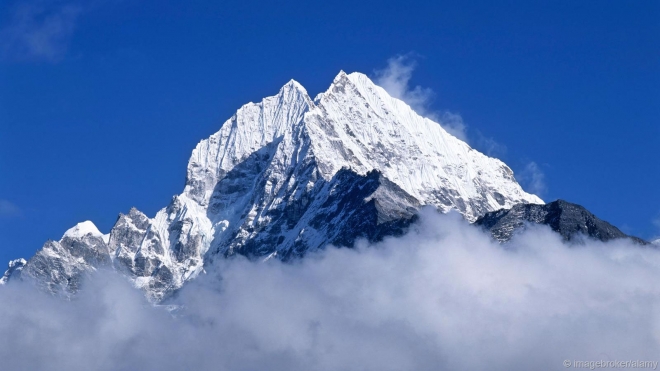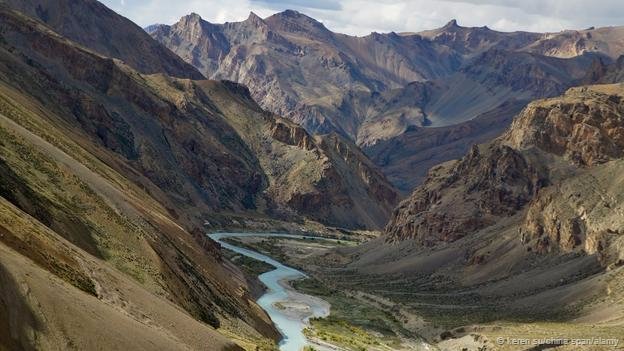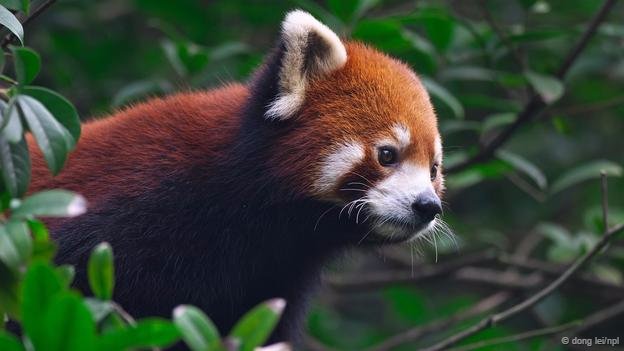Living on the "roof of the world". Part One: A Diversity of Life

© Alamy Tamserk Peak in the Himalayas | bbc.com
Humans have long been the heights of the heavens and the boundless skies of the sky. The planes made it possible to feel the pleasure and ease of travel for the flight, and the sky-highs coming from the fast-paced sky filled one more dream - the opportunity to live and work between the clouds. However, the life of the wildlife in the world's highest mountains is much more complicated. Quenching cold, heavy wind and rare weather - comfort does not really add. But despite these difficulties, there are animals that are able to live even on the very roof of the world.
Living on top of the world's highest mountains is a real challenge. At high altitudes there is very intense sunlight, cold wind is blowing from all sides, and it's not easy to breathe because of low oxygen content. However, despite these extreme conditions, life is flourishing here.
If you climb to the summit of Mount Everest, the highest mountain in the world, you will find a wide variety of life as you grow up. From rocky meadows to snow-covered rocks - there will always be animals and plants here if you know where to look. These organisms are located in one of the most extreme locations on Earth. How did they succeed? To find out, we have to dig into the heavens.

© Keren Su / China Span / Alamy Himalayan rainforest Ladake, India | bbc.com
Among the stunning Tibet Plateau and the fertile plain of India, the largest mountain range in the world rises. The Himalayas are known for their heights, overlooking the sky, with over 110 peaks, which are 3,715 m above sea level. Everest rises to a height of 8848 m.
We will start our journey in the Himalayan foothills, about 610 m above sea level. These foothills in the east extend over 1609 km. Once upon a time, they covered the woods, but most of the trees were cut down on the roads needed for farms. The rest is a real shrine for Asian elephants and rhubarbs who are still wandering in the Terraya region of southern Nepal. Black asian bears, smoky leopards, Himalayan lagoon and more than 340 species of birds are also available in these forests. Tigers also wander in the foothills of Bhutan.
In 2010, Alan Rabinowitz, a wildlife expert, visited the surrounding area, with the BBC's film team. When they climbed to a height of 4 km, they tried to find out what animals live in secret cameras. Robinowitz managed to capture real wealth of wildlife: red leaves, jungle cats, monkeys, leopards, black Himalayan bears, musk deer and even red panda.
If we went even higher, we would have left deciduous forests and farms in the foothills of the mountains, and we entered the coniferous forests with spectacular waterfall cascades. These pine, pepper, blueberries and spruce branches each year receive nearly 80 inches of rainfall (about 2 meters). There are many animals available here. Some of them are glued (golden) to the window. A thick coat protects these monkeys from frost. Like most animals in this region, they spend their winter in the lower valleys.

© Xi Zhinong / NPL Chickpeas monkey | bbc.com
However, Langur is not the world's highest monkey. This title belongs to the ape monkey, which due to its dense fur can live higher than other primates except people. Due to unusual facial features, this type of monkey is similar to the victims of missed plastic surgery.
In these forests, you can find musk and deer, which are famous for the gastric scent found in almost all modern perfumes.

© Dong Lei / NPL Red Panda | bbc.com
On high mountain slopes, deciduous hardwood forests are a great hide for one of the most beloved animals - the red panda. This incredibly shy creature avoids predators living above the forests. Its dense coat protects from frost, and hair-covered feet keep the legs warm and prevent snow from slipping. Unlike other mountain animals that spend cold winters hanging down the hill, the red panda is left to hibernate. Its main source of food is bamboo, so it can only live where they grow. The red panda can spend about 13 hours a day searching and eating bamboos, although these crops are very difficult to digest due to their fiber, and the red pandas are not well adapted to cope with the complex material of this plant. During the summer, they also eat fruit and insects, or even bird eggs, but in the winter pandas can lose about 15 percent. your body weight. In winter, they can survive the lack of food by slowing down their metabolism, which is almost as low as the lazy ones.
However, the wealth of life existing here is not all, no less surprising, and the flora and fauna found at much higher altitudes.
Red panda is so cute :3 awww
looks differet like others kinds
red panda beautiful, great post
astonishment